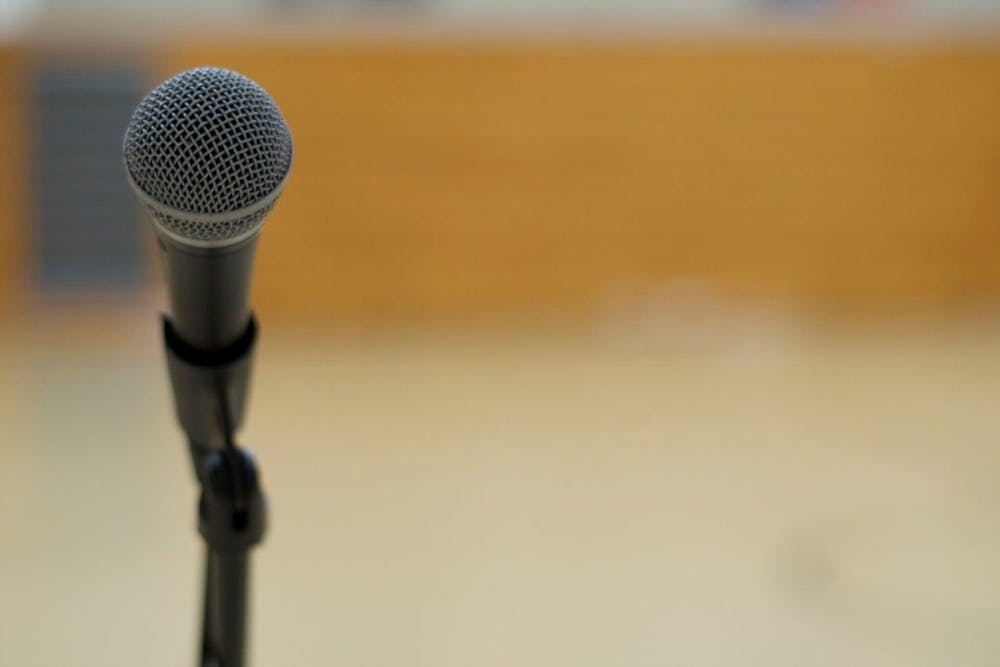By Annabel Brooks, For The Miami Student
Czech artist Pavla Sceranková flew from Prague to visit Miami University last Thursday and give a lecture on her innovative sculptural work. Introduced by Tracy Featherstone, an associate professor in the College of Creative Arts, Sceranková displayed her current and past works with stunning intellect and depth, despite her limited knowledge of English.
Sceranková, born in the Slovak Republic in 1980, currently lives and works in Prague. She introduced herself by emphasizing her deep connection with both the Slovak Republic and the Czech Republic.
During her lecture, Sceranková was adamant about the cultural worth of her birthplace, saying that while the Republic is small, in regards to art, it definitely, "has something to offer." She followed this with a brief slideshow of various art dwellings and festivals in Prague, all of which proved that the Eastern European city is definitely a player in the contemporary international art scene.
She recently received her Ph.D. at the Academy of Fine Arts in Prague, where she will be teaching in the fall. Her thesis, "Mind Without an Image," focuses around the border where art and science meet and the idea that the two disciplines may be helpful to each other. Much of Sceranková's work displayed during the lecture centered around this relationship between science and art.
The first wave of Sceranková's work that she introduced was a collection of video sculptures, starring the artist herself. In these, she manipulates the very idea of 'sculpture' by creating an object and then destroying it, only to build it back up again, all while using a system of complex triggers and systems that create the fascinating illusion of an object creating and destroying itself unassisted.
Thomas Etherington, a junior at Miami, attended the lecture and was pleased with the presentation.
"I thought that the videos played in reverse with the artist as the subject were interesting and felt sort of melancholy," Etherington said. "I like that they represented an early stage of the artist's career."
Next, she presented her work, "Two Phases of a Duster," a sculptural work made of plastic tubes and wood, mimicking a child's playground but with slight deformations.
"The deep focus in my work [is having] material in connection with some space and time [and] how images in our memory are deformed according to the situations in which we experience them," Sceranková said during her lecture.
This manipulation of memory and objects is evident in several of Sceranková's other works, including her sculpture, "UMZUG," which she calls, "the missing piece of the puzzle." This piece is made almost entirely of styrofoam and was constructed to fit perfectly in the gallery space given to Sceranková. The work was manipulated in regards to memory because Sceranková's mother actually used the styrofoam to insulate her new home when she moved.
"I thought the way that she used her art was really interesting," said John Thompson, a Miami senior. "I especially liked the styrofoam piece and how her mom used it for her new home."
Enjoy what you're reading?
Signup for our newsletter
This concept of art engaging with people is developed further in Scerankova's series, "Meeting in the Department of Galaxies," in which she explores the connection between art and science more explicitly. One of the pieces in the series, "Planetary System," is made up of balls of yarn representing various planets that are connected to a pole symbolizing the center of the solar system, the sun. Sceranková invited visitors to contribute to this piece by further knitting the connections between the planets and the sun.
Sceranková's work encapsulates ideas of perception, collaboration and innovation. Her art is a representation not only of what the Czech Republic is trying to do with art, but also of what the international art scene is attempting to accomplish. She does this with remarkable grace and success, and it seems as though her work can only get better.




